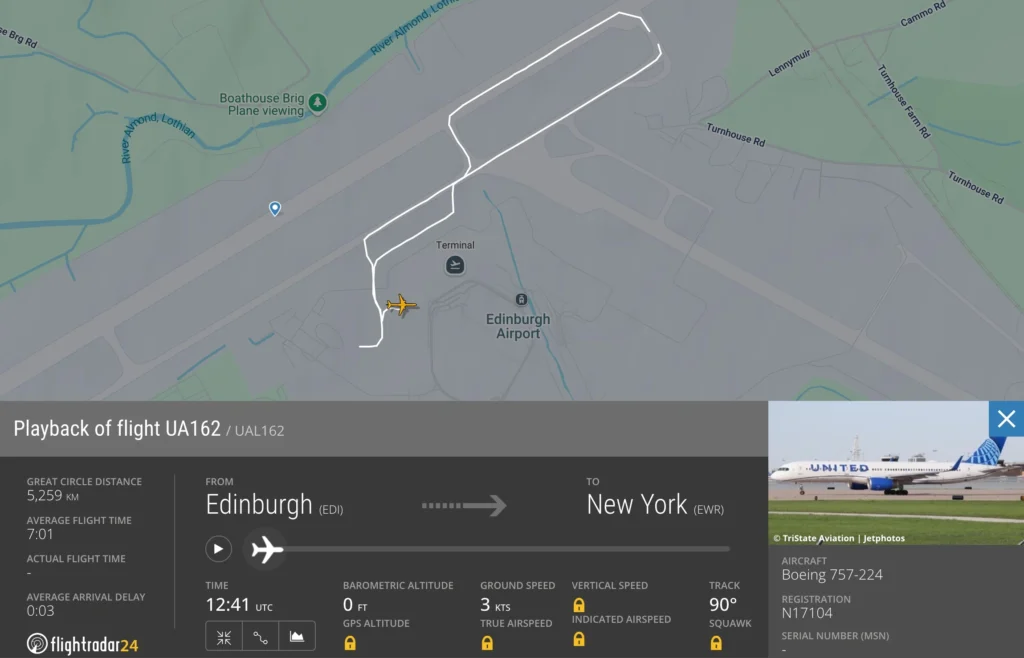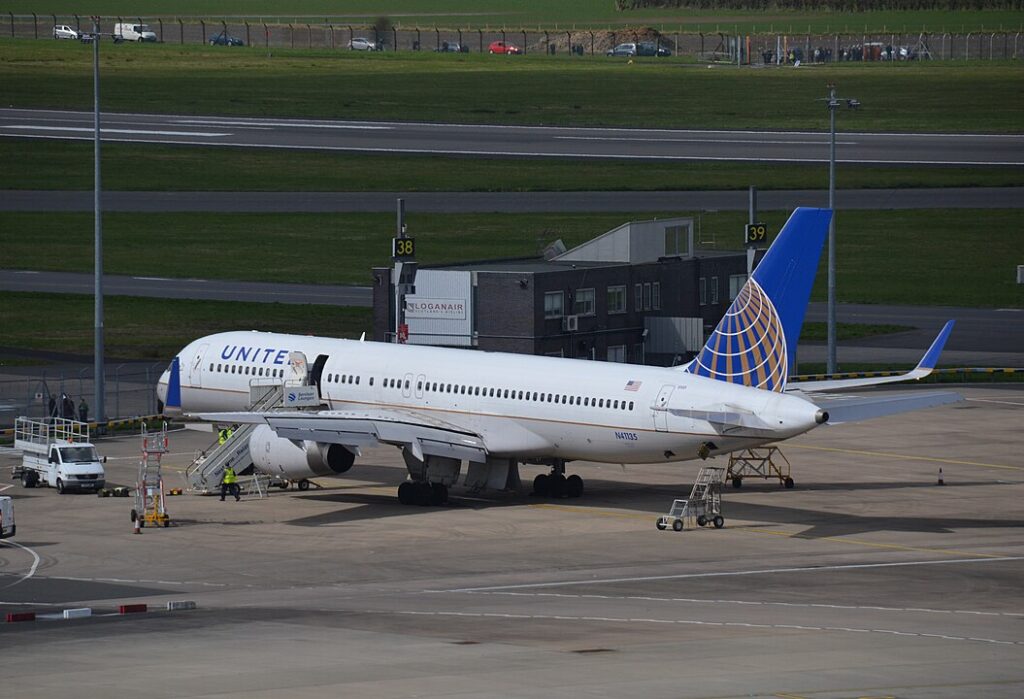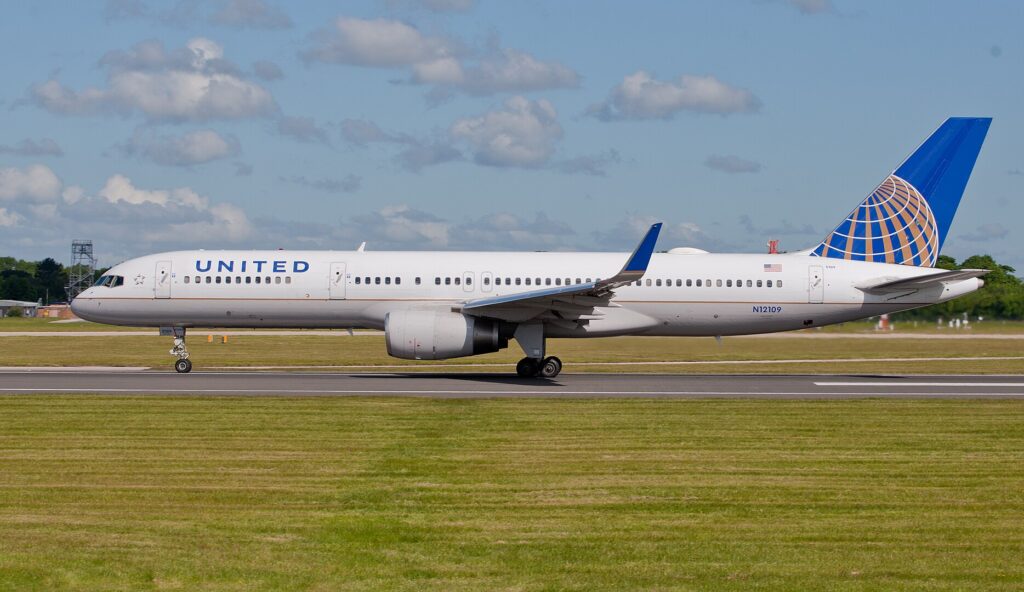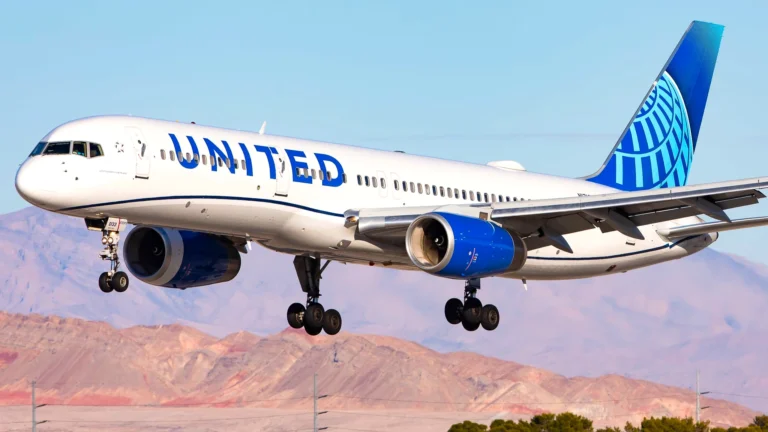EDINBURGH- A transatlantic flight operated by United Airlines (UA) was cancelled at Edinburgh Airport (EDI) due to a mechanical issue involving a Boeing 757 aircraft on May 26, 2025.
Flight UA162 was scheduled to depart for Newark Liberty International Airport (EWR) on May 26 but was cancelled after returning to the gate following a technical fault. Affected passengers were rebooked on later flights.

United Cancels Edinburgh to Newark Flight
United Airlines flight UA162 was due to leave Edinburgh Airport (EDI) at 1:50 p.m. local time and arrive at Newark Liberty International Airport (EWR) at 4:30 p.m. Eastern Time.
The flight was operated using a Boeing 757 aircraft registered as N17104, a long-serving model in United’s fleet, commonly used for transatlantic routes.
Shortly before takeoff, a potential mechanical issue was detected. Following standard safety procedures, the aircraft returned safely to the gate and did not depart.
United Airlines subsequently canceled the flight to assess and resolve the issue. While the specific fault was not disclosed, the airline emphasized that passenger safety was the top priority.
Passengers were assisted at the airport and rebooked onto the next available flights to Newark. The carrier stated it was working to minimize disruptions and ensure affected travelers reached their destinations as soon as possible.

Passenger Rights and Compensation Guidance
In response to the cancellation, the UK Civil Aviation Authority (CAA) reminded travelers of their rights under UK law.
Passengers may be entitled to compensation if their flight is cancelled or severely delayed, although eligibility depends on specific circumstances.
Compensation typically applies if the cancellation causes significant inconvenience and is not due to extraordinary circumstances beyond the airline’s control. Mechanical issues may qualify, depending on their nature and the airline’s maintenance protocols.
The CAA advises passengers to contact the airline first for assistance and to use its official guidance on how to claim compensation. Travelers are also encouraged to keep records of all communication and expenses incurred due to the disruption.

Similar Incident
United Airlines Flight from Wilmington International Airport to Newark Liberty International Airport executed an aborted takeoff on May 24, 2025, following a complete engine shutdown during the takeoff roll.
The incident involved its scheduled service between the two airports, with the aircraft halting abruptly before returning to the gate.
The pilot informed passengers that a complete engine shutdown had occurred, necessitating the flight cancellation and rescheduling for the following morning. The aircraft had already experienced delays exceeding five hours before attempting departure, adding to passenger frustration when the mechanical failure forced the abort.
Passengers reported that the aircraft began accelerating normally for takeoff when it suddenly came to a complete stop on the runway. Silence filled the cabin as the plane remained stationary, prompting concern among travelers. The flight crew then exited the cockpit to deliver the news about the engine failure directly to the passengers.
Aviation professionals classified this incident as a rejected takeoff, a standard safety procedure executed when critical problems occur before reaching V1 speed.
V1 represents the critical decision speed during takeoff operations, beyond which pilots must continue the takeoff sequence even with certain failures. The aircraft’s systems functioned correctly by detecting the engine failure before this critical threshold, allowing the crew to safely abort the departure.
Engine failures during takeoff represent rare but serious scenarios that require immediate pilot response and extensive training preparation. Pilots practice these emergency procedures regularly to ensure proper handling when real situations arise.
Featured Image by Clément Alloing | Flickr
Stay tuned with us. Further, follow us on social media for the latest updates.
Join us on Telegram Group for the Latest Aviation Updates. Subsequently, follow us on Google News

